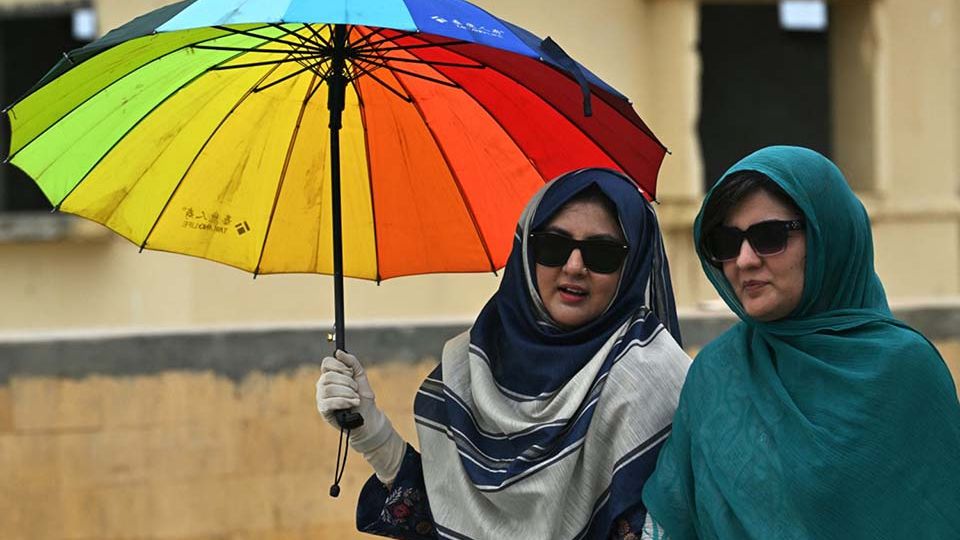June 16, 2025
ISLAMABAD – I WAS editing The Review in the early 2000s when Tahir Mirza moved to Dawn, Karachi, to take up the position of news editor and our magazine’s supervisor. I learned a lot from him, mainly how to think about issues — what’s new here and/or why should I care? He helped me submit my first editorial on how fashion weeks could boost the economy. We had not had a fashion week in the country yet. On the face of it, it was about fashion, a topic usually relegated to the magazine — ie, ‘not serious’ — but because I wrote about it from an economics angle, it worked.
A year later, I was transferred to the leader writing team (a lesson on perseverance, kids) where my supervisors taught me more about how to write, especially when it’s about the same issue. What more can you say about (insert act of injustice) without sounding like a broken record?
Sometimes you have no choice but to bang that drum.
It is with this in mind that I thought about the murder of the TikToker Sana Yousaf, shot dead on her 17th birthday by a man slighted by her indifference. I have nothing to add to the voices condemning this gruesome act, but I’m taking a cue from Mirza sahib when I ask, ‘what’s new here?’
Nothing. But a new approach is needed.
Nothing can change unless people and corporations stop profiting from misogyny. Influencers like Andrew Tate speak against women, corrupting young boys and normalising incel culture, while leaders like Imran Khan say men are not robots and our TV dramas glamorise gender-based violence. These views must be shunned and challenged, not promoted. There should be no money in misogyny.
Women just haven’t been seen as valuable members of society who can contribute to the country’s growth. Spare me the stories about the valiant female heroes who fought for this country’s independence. I am not denying their contribution, but retelling their stories amounts to nought when Pakistan is not a safe country for women.
We need to count the cost of women dropping out of the workforce, or not even making it to the workforce because they do not feel safe. Only 25 per cent of Pakistan’s women are in the formal labour force, according to the Asian Development Bank. When a woman steps out of her home to earn an income, like Sana Yousaf may have been attempting to do as a content creator — a fine career option — she may be killed and her death feted by men on social media.
No country can progress if its women lag behind. No country has reached gender equality, and no country seems to make that its priority. In 2015, McKinsey estimated that advancing gender equality could add $12 trillion to global GDP by 2025. While that has not happened, some countries have made strides in the last few decades.
After the 1994 genocide in Rwanda, policymakers made gender equality a priority in their quest to rebuild their country. A 30pc quota for women in all state decision-making bodies was included in their constitution. It became the first country in the world to have a female majority in parliament. Six of the country’s 11 banks are run by women, according to a story in Le Monde last year. Women-owned businesses significantly contribute to the country’s economy. Earlier, governments invited highly skilled diaspora to return to rebuild their country. (The less said about our diaspora, the better.)
This has happened in 30 years.
I have written extensively about Vietnam’s progress following the American War, where they too created quotas and made great efforts to improve women’s access to education and work opportunities. Last year, 69.1pc of women were in the labour force.
We can also learn from Bangladesh, which invested in women from the get go. They recognised their future was tied to women’s independence and participation in the labour force, which grew steadily to 44pc last year.
To increase women’s participation in the labour force, Chile’s education reforms included childcare subsidies, which enabled mothers to work. Their participation rate has grown since 1990 to 52pc. Chile introduced entrepreneurship as a central economic development strategy and saw women’s entrepreneurship grow. This contributed to SME growth and innovation, making Chile one of the fastest-growing and most stable economies in South America.
As I was writing this on Thursday, news came that Pakistan ranked last among 148 nations in the World Economic Forum’s Global Gender Gap Report 2025.
In 2023, the IMF said “narrowing the gap between the share of men and women who work is one of the very important reforms policymakers can make to revive economies”. Maybe that will prompt leaders to safeguard our lives, and their future.
The writer is an instructor of journalism.


